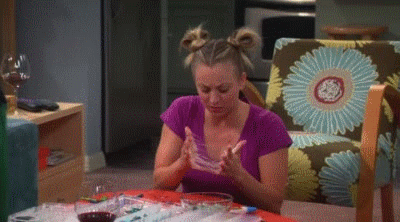

Nicky is icky and sticky!

Rationale: In this lesson, we will learn the short vowel correspondence i=/i/. In order for a child to be able to read, the child must learn to recognize the spellings that map out the word pronunciations. Throughout this lesson, children will learn to recognize, spell, and read words containing the phoneme i=/i/. They will learn meaningful representation (Nicky is Itchy and Sticky), they will learn how to spell (and read) them in a letterbox lesson, and be able to read a decodable book focusing on the correspondence i=/i/.
Materials:
-
Graphic Image
-
Cover up critter
-
White board or smart board
-
Letterboxes for you (teacher) to model
-
Individual letterboxes for each student
-
Letter manipulatives for each student ( t, i, s, b, r, c, k, n, f, p, d, y, h, g, l, p)
-
Magnetic or smart board letters for teacher to use for letterbox lessons ( t, i, s, b, r, c, k, n, f, p, d, y, h, g, l, p)
-
List of words to read (is, bit, brick, sniff, thing, sink, lift, kick, tip, pine)
-
Decodable book : Liz is Six (copy for each student and teacher)
-
Assessment worksheet
-
Pencils
-
Primary paper
Procedure:
-
Say: “To become expert readers, we need to learn the code that tells us how to pronounce words. We have already learned to read short vowel words with “a” and “e,” and today we are going to learn about the short vowel i and its sound, /i/.When I say /i/, I think of my friend Nicky who is icky and sticky after eating pancake syrup (show image of sticky hands). Sometimes, when we eat pancakes, we get sticky syrup on our hands. Now, when we see the letter “i” today, we know it says /i/ like Nicky is Itchy and sticky!
-
Say: “ So, before we learn about the spelling of /i/, we need to listen for it in words. When I listen for /i/ in words, I hear i say its name /i/, and I can feel my mouth open and my tongue rest on the top of my bottom teeth, not moving. There is a short “i” in the word fix. Now I’m going to see if there is a short “i” in the word sit. S-i-i-it. Do you hear the Icky sticky nicky? I did. Now you say it. What did your mouth do? If you hear “i” in the word lick shake your hands as if you had syrup on them (show example with hands). L-i-i-c-k. Ahh, you got it!
-
Say: Now, we will do our letterbox lessons! Everyone move your letterboxes and letters where you can reach them. We are going to practice spelling words that have /i/ in them! Let me show you an example real quick. I am going to spell the word “is”. How many phonemes are in this word? Lets find out I-S, that’s two. I need two letterboxes. I heard the “i” before the “s”, so I will place my “i” letter in this box and my “s” in this one (show students).
-
Say: Now, its your turn to spell in letterboxes! Lets try the word “Clink!” How many boxes do we need? (wait on classes response) Which letter goes first? (waits on classes response? Second box? (waits for response) Third box? (waits for response) Fourth box? (waits for response) Okay, and for the last box we need.. (waits for response) Great job guys! Now, you will only need three boxes. How would we spell the word “bit”? As in, I only have a bit of cleaning left to do.” (observe children spelling words). Now lets check while I spell my word b-i-t. Did you spell it the same way I did? Great job! What about the word sticky? You will need five boxes for this word. (Observe children spelling word). Woah ya’ll are pro’s!”
-
Say: “Now I am going to let you read the words you’ve spelled, but first I’ll show you how I would read a tough word. [Display the word script on the smartboard and model reading it first]. First, I see there’s an “i”. I am going to use my cover up critter to get the first part. (Uncover and blend sequentley before the vowel, then blend with the vowel). /S/ /t/=/st/. Now I am going to blend that with /i/=/sti/. Now all we need is the end! /c/ +/k/=/ ck/. If we bring them all together, we get /stick/. Stick, that’s it! Now it is your turn!” (have students read words individually and then have them come together and read together).
-
Say: “You all have done a great job at reading words with our new spelling for /i/=i. Now its time for us to read a book called Liz is Six. In this book, a young girl named Liz has a birthday party. She gets a mitt and wants to play baseball with her friends. Her friend the pig bats first, and hits the ball hard! Will Liz be able to catch it? How will Liz hit the ball? Who do you think will win the game? Lets pair up and take turns reading to find out about Liz and her friends. (teacher walks around room observing children reading, when they are done, the class reads the story as a group aloud).
-
Say: “Wow! That was great! Everyone kept up and stayed together! I am going to pass out a worksheet for you to complete. It asks you about the /i/ sound, and I know my students have been using their listening ears! For this worksheet, I want you to color in the pictures that made the short vowel sound! When you have completed this, please bring it to my desk”
Resources:
https://mkc0026.wixsite.com/katieclarkslessons/beginning-reading-design
https://www.education.com/worksheet/article/which-picture-shows-the-short-vowel/